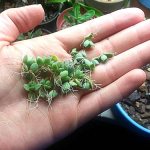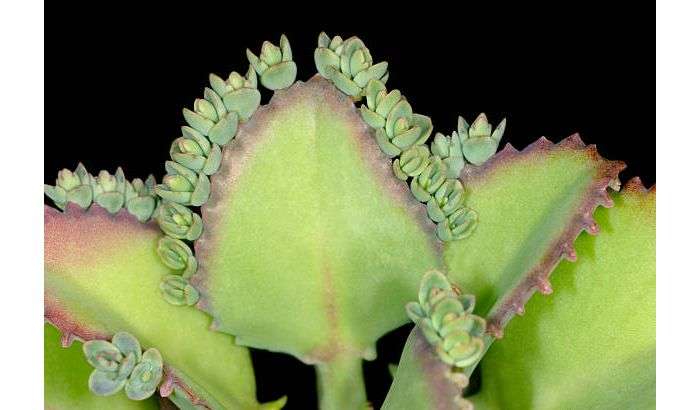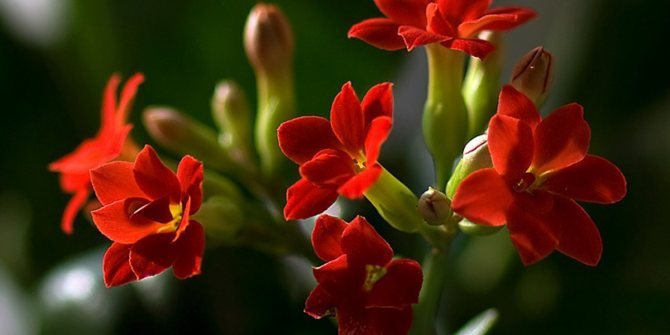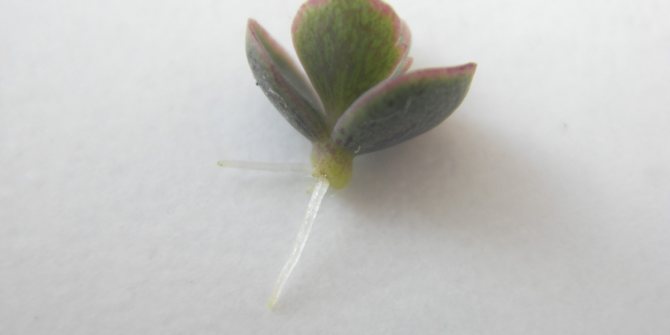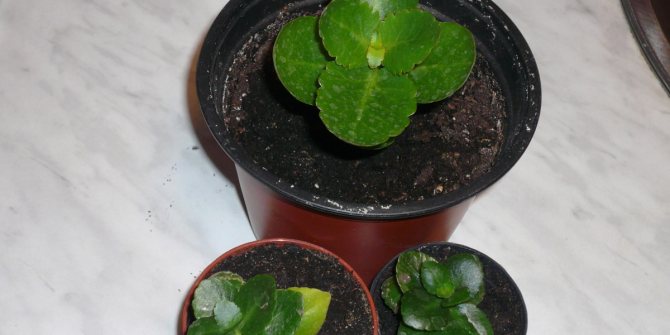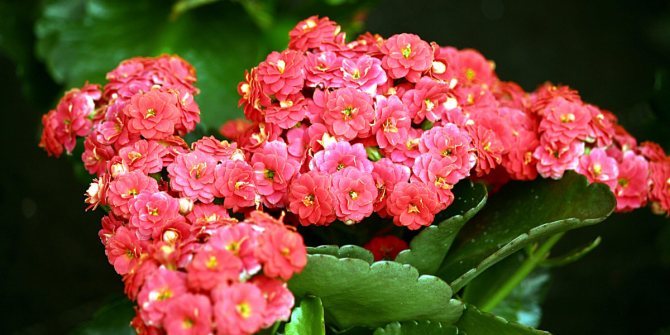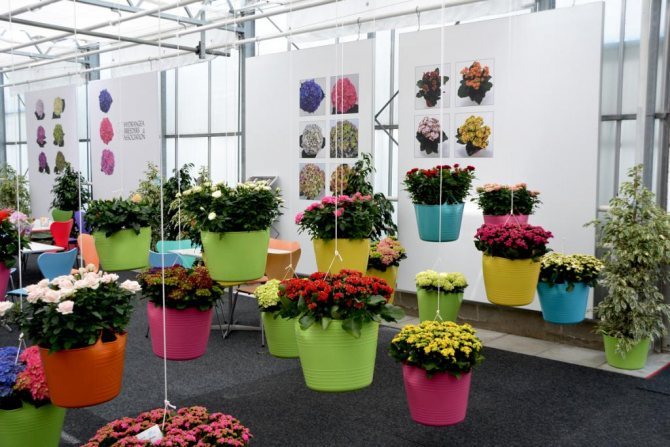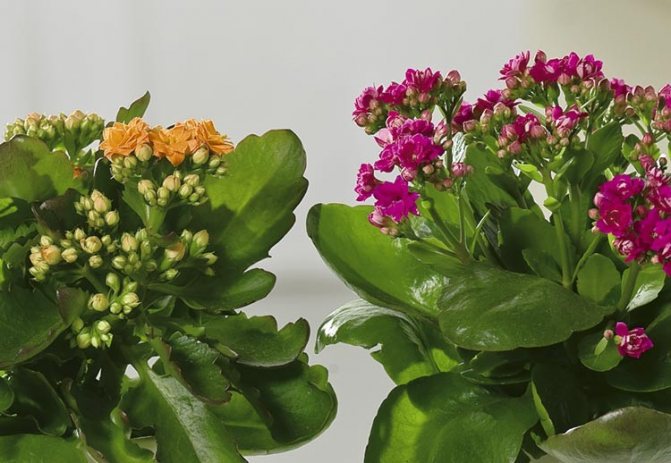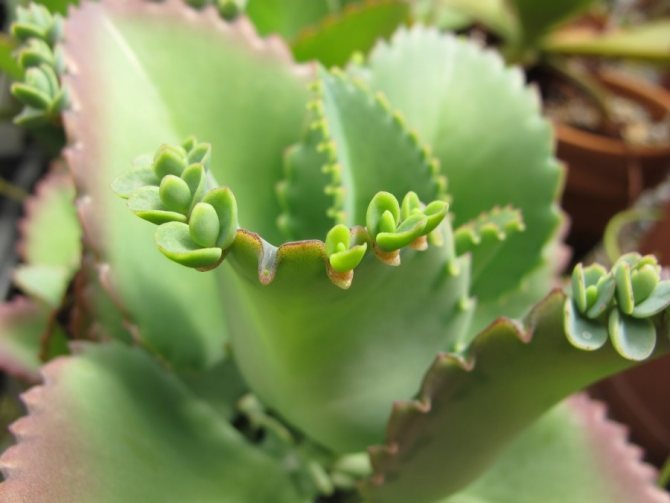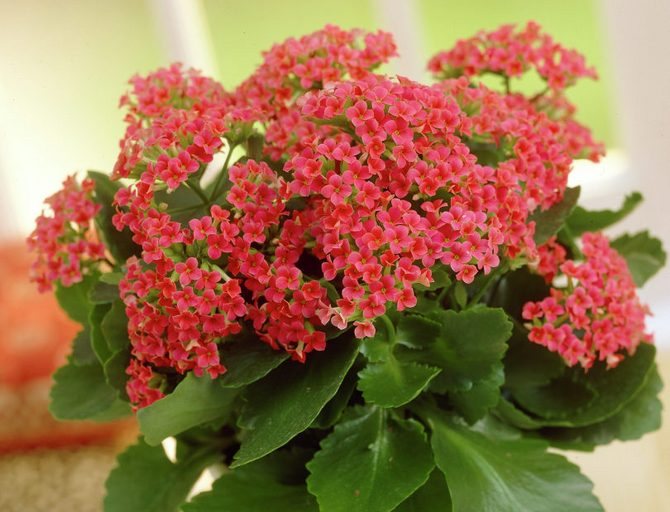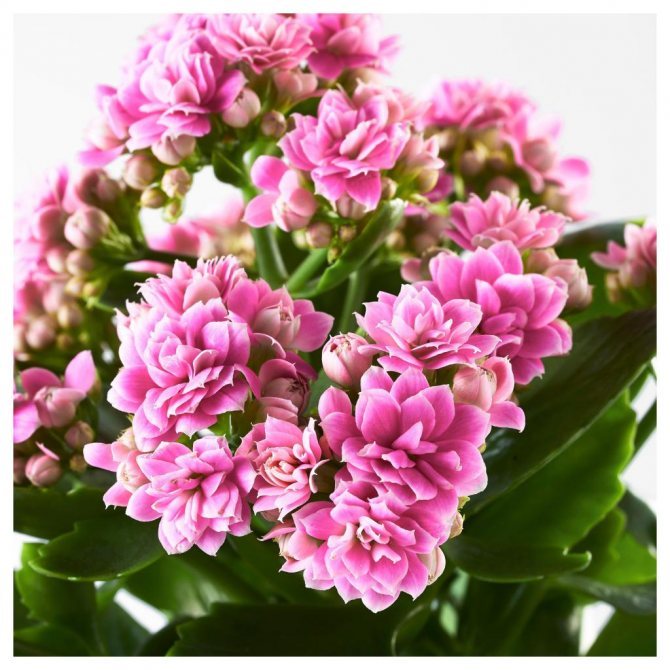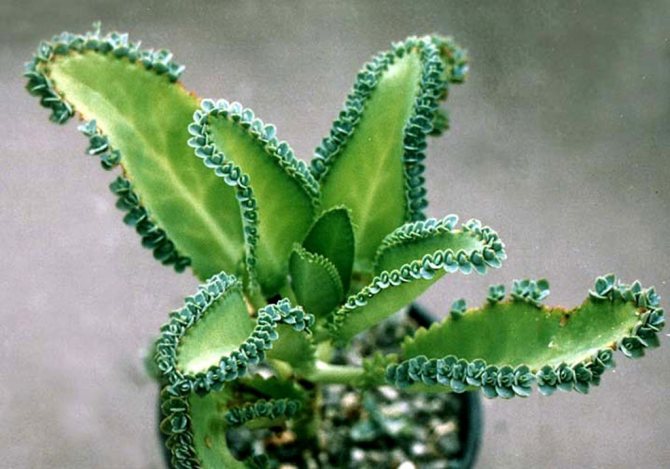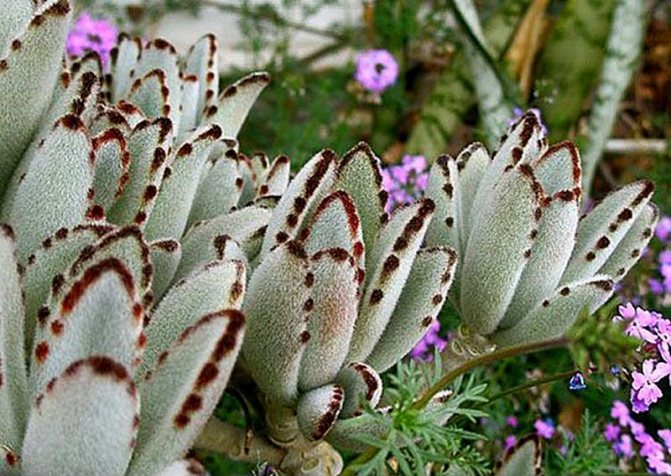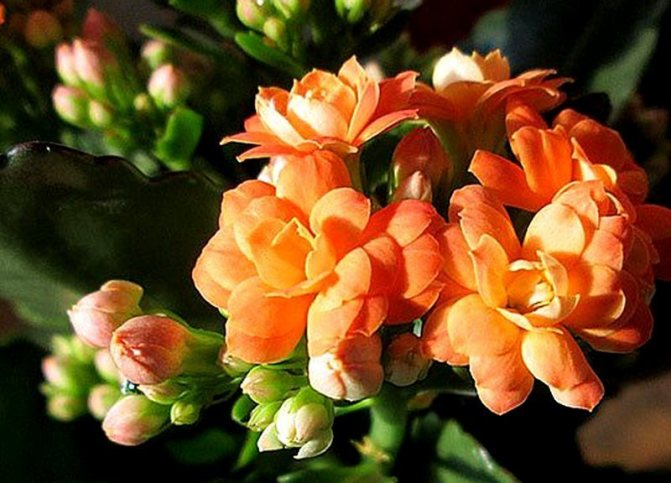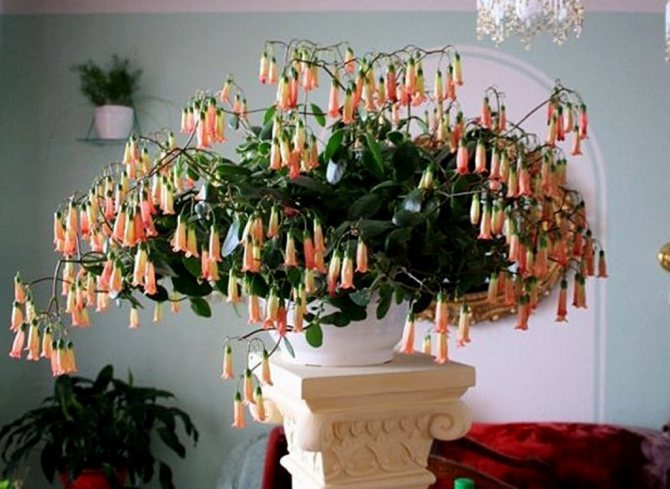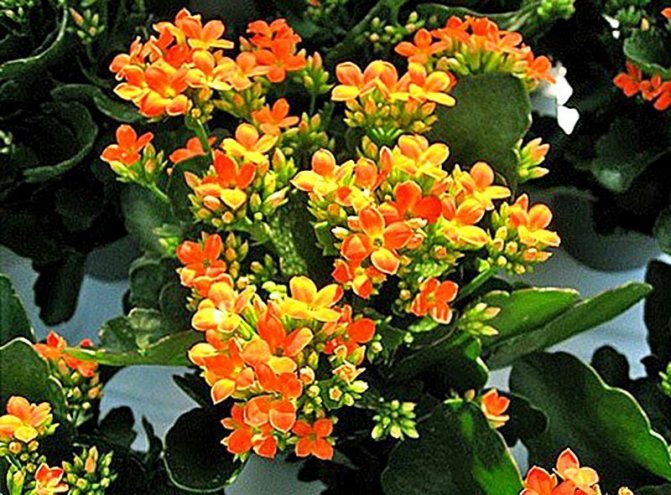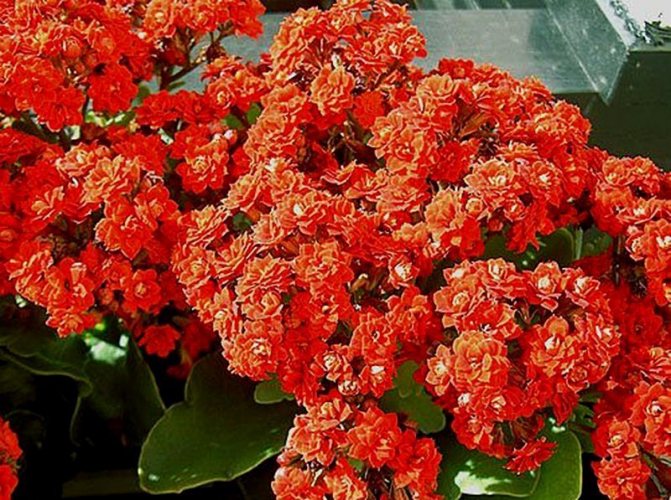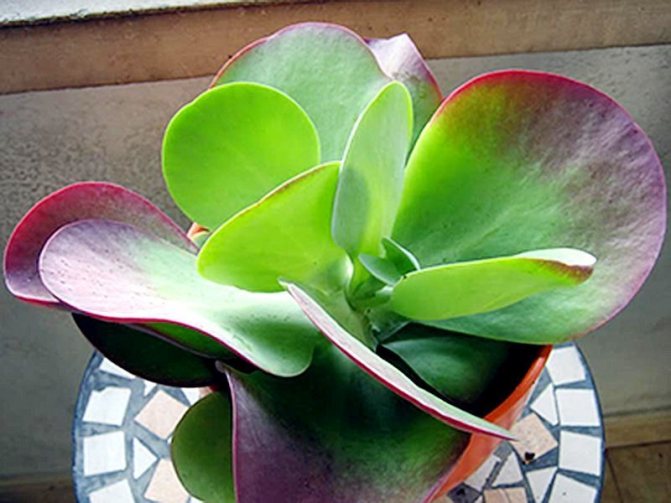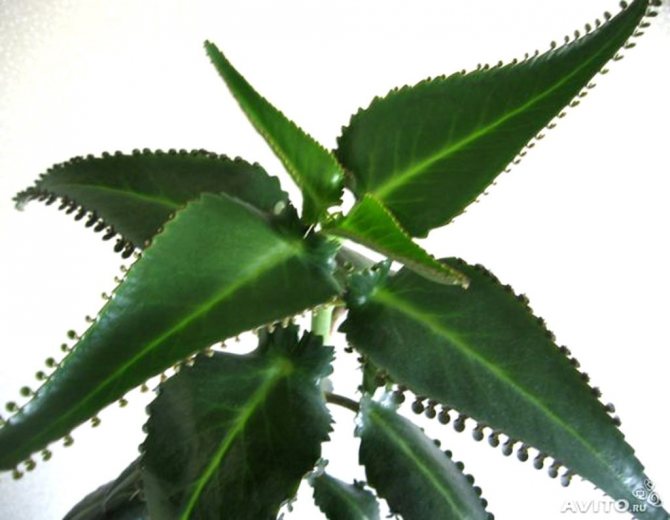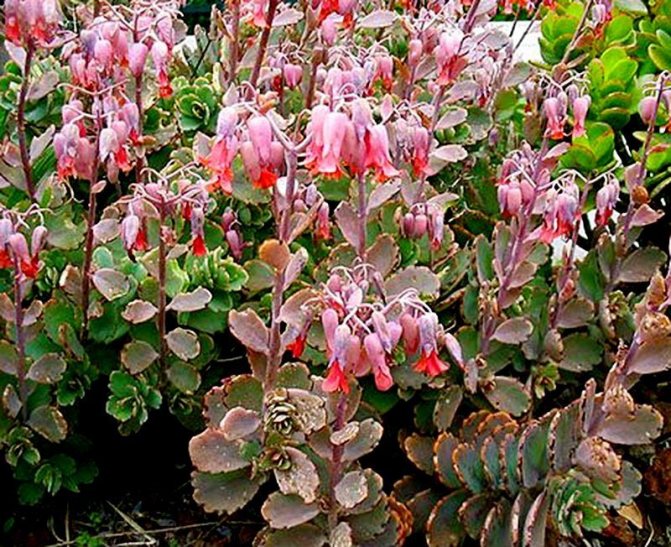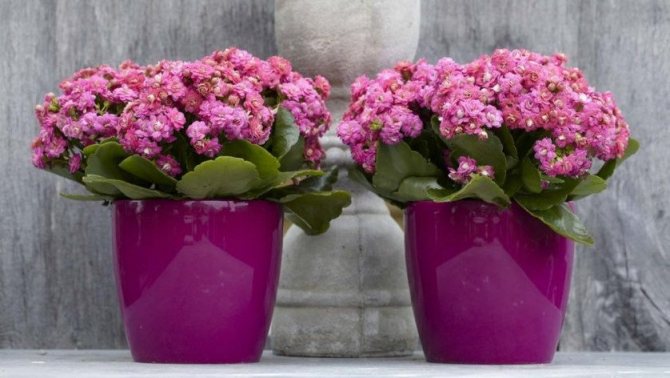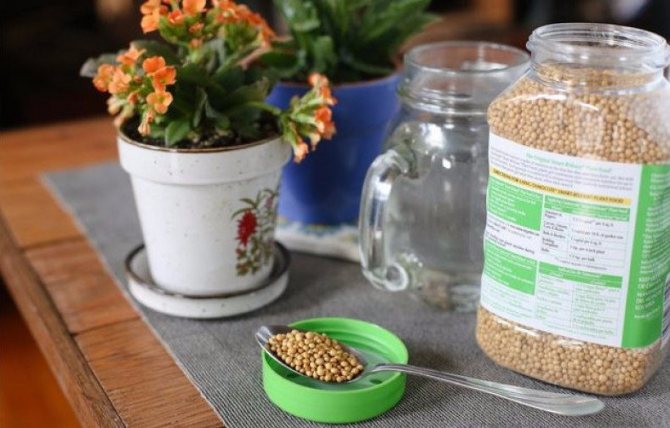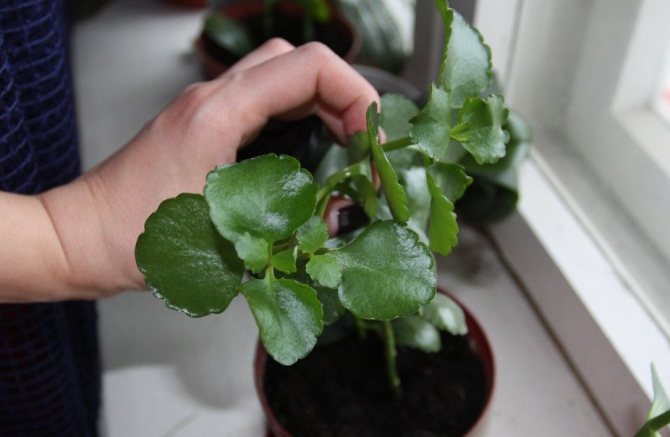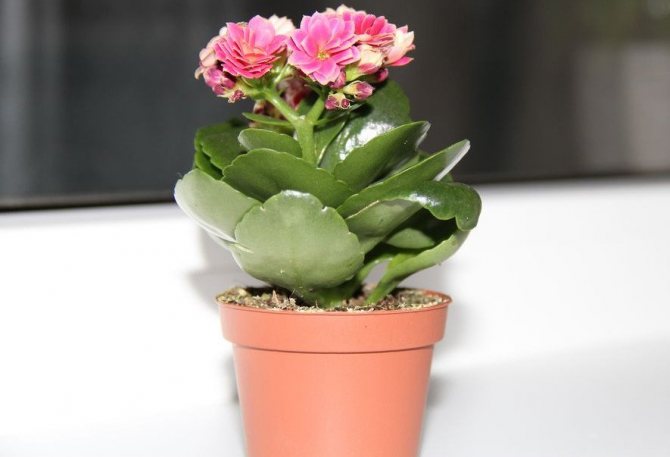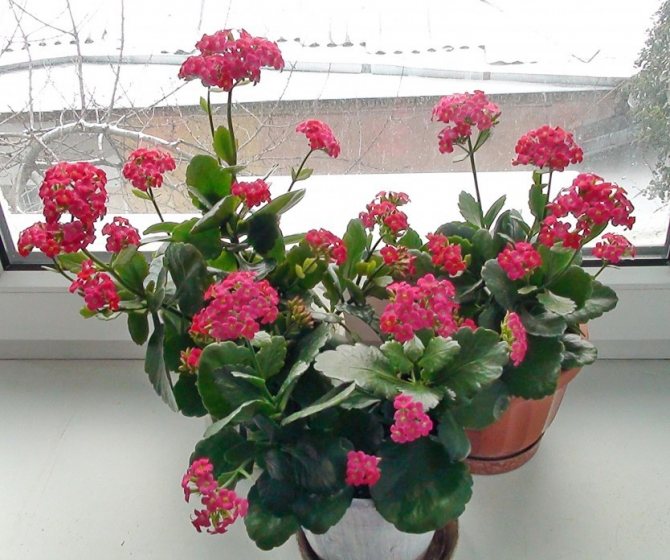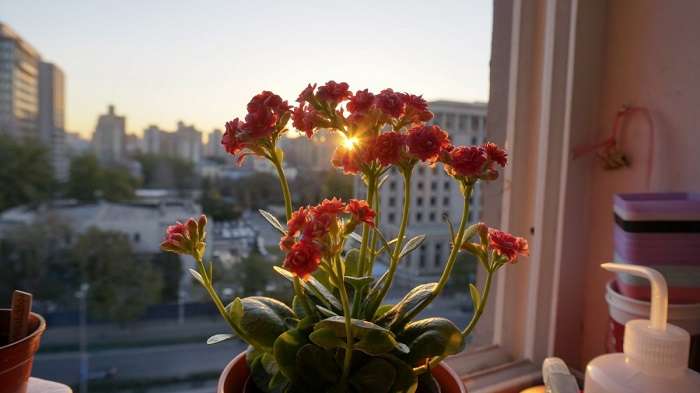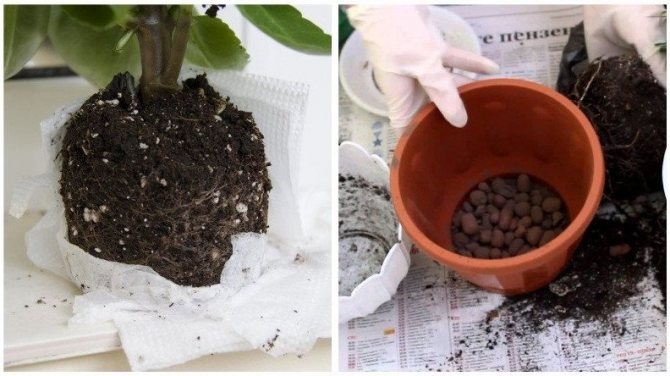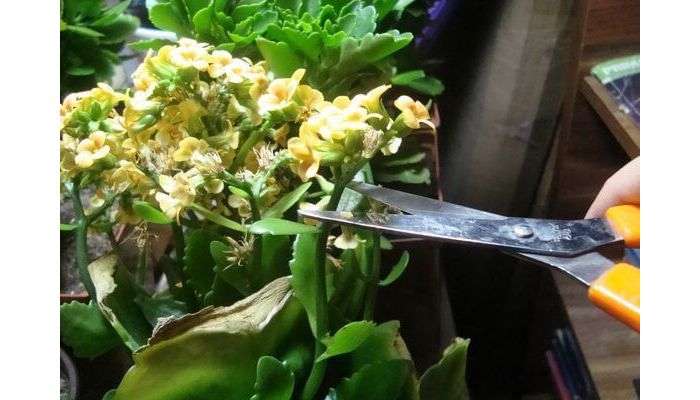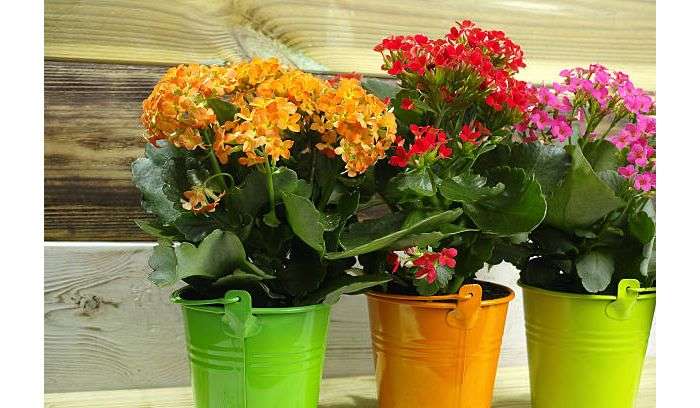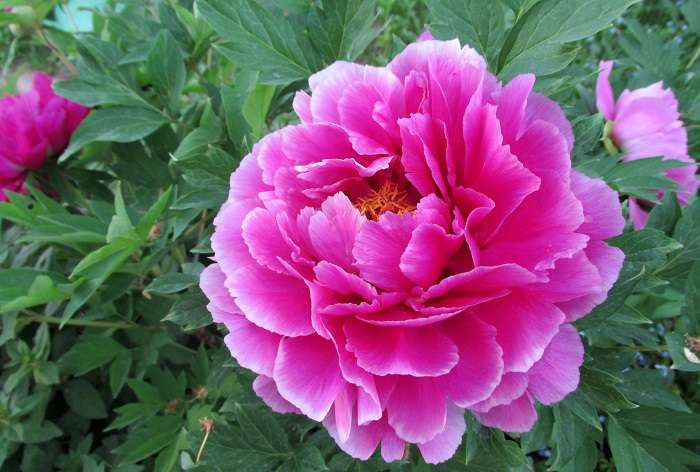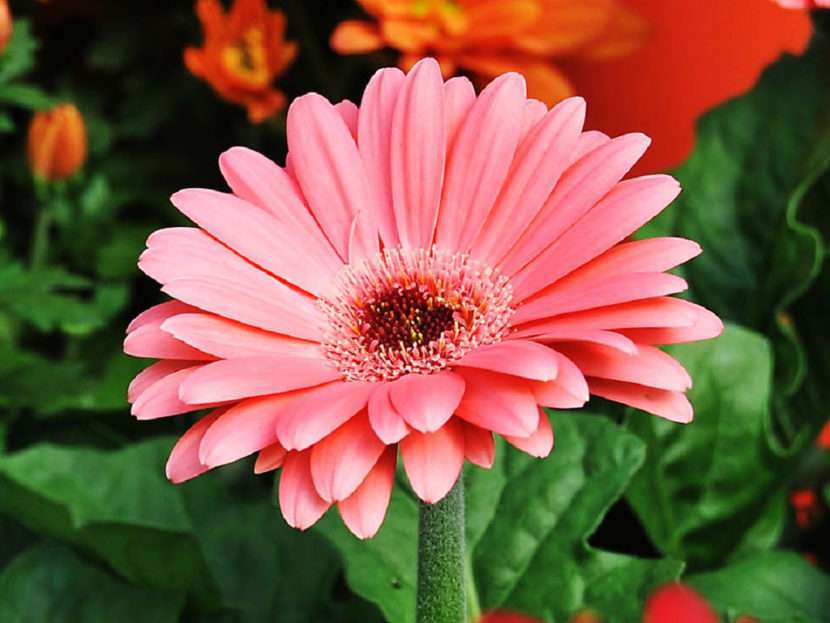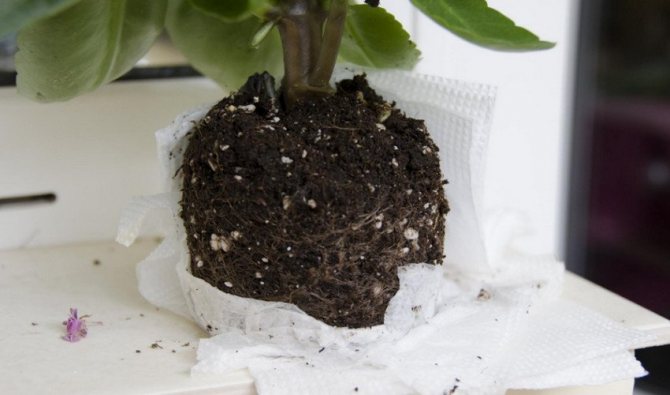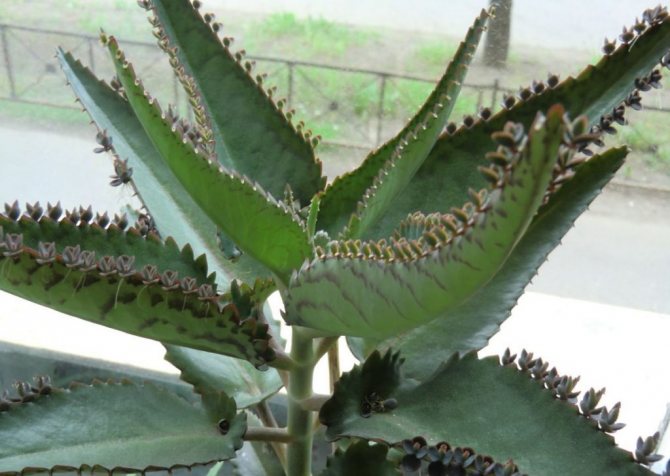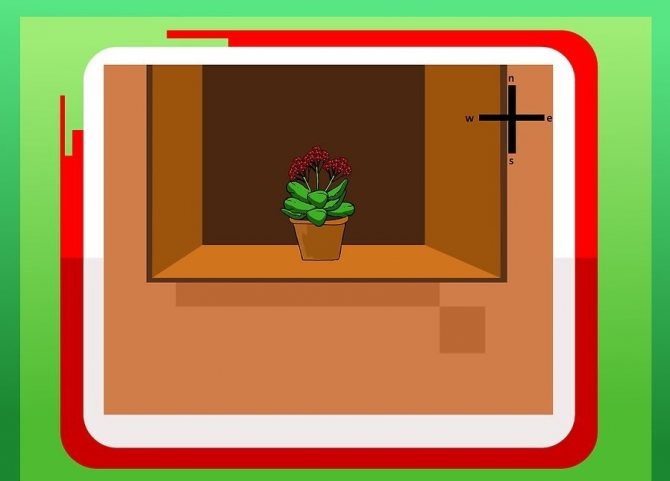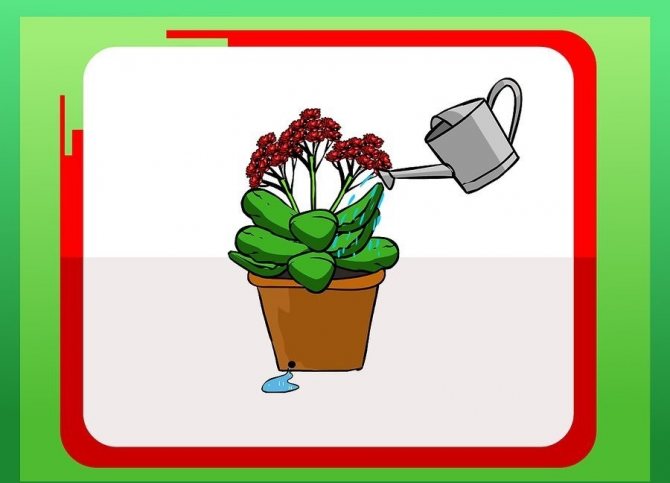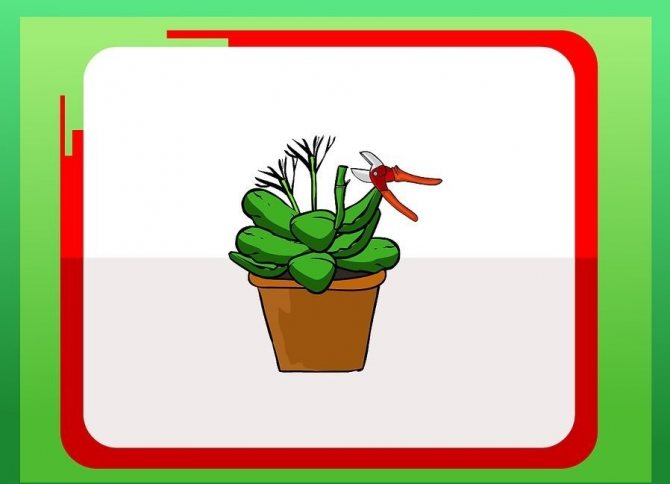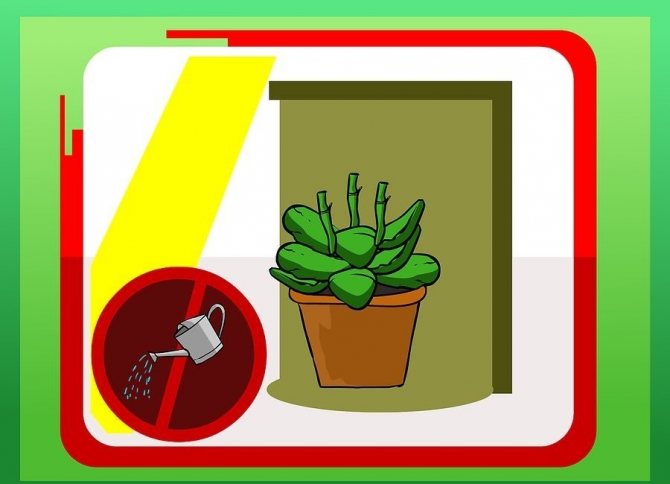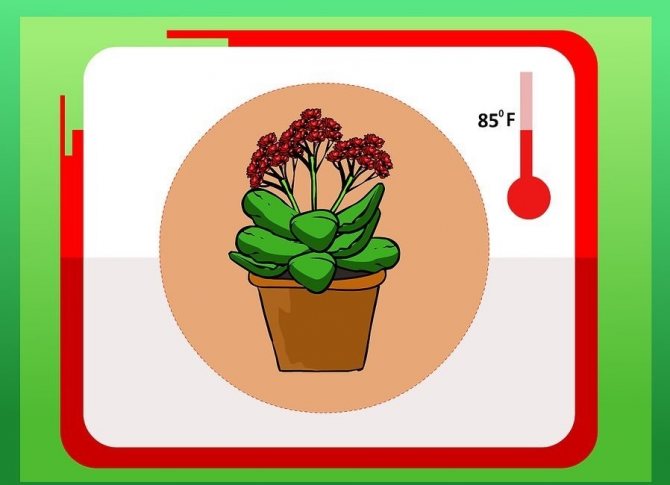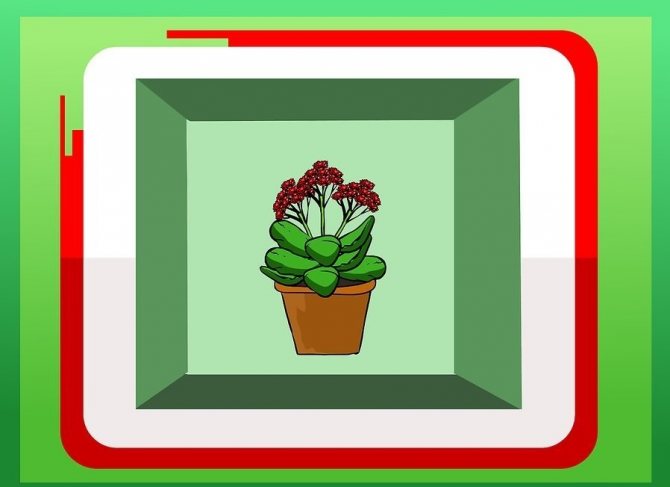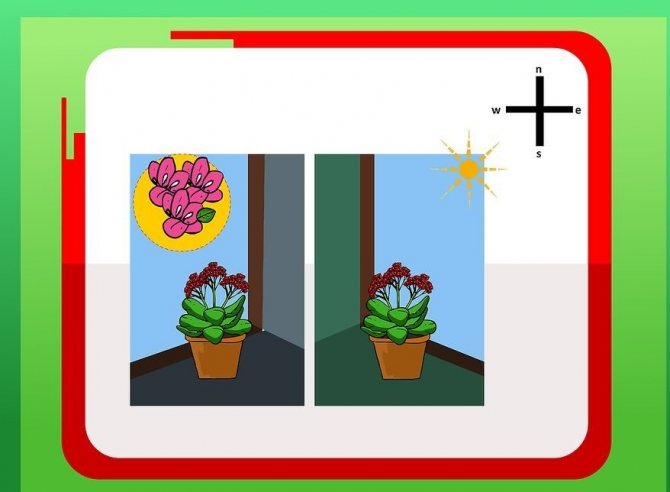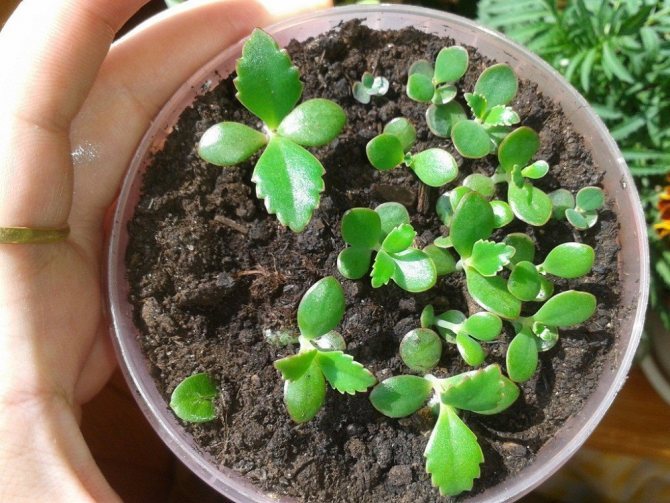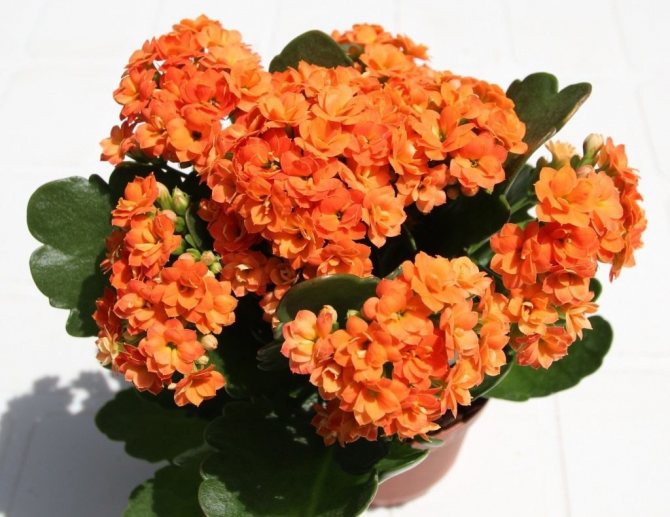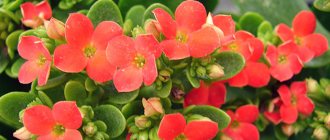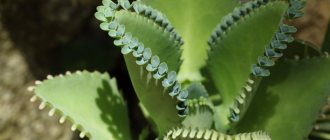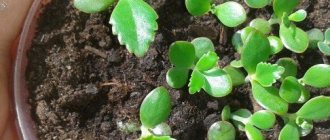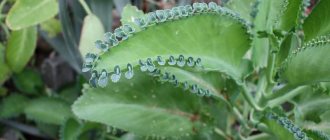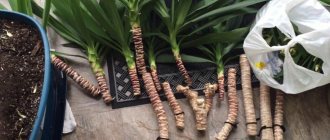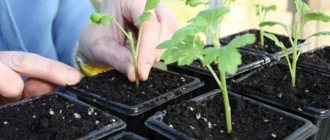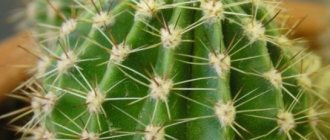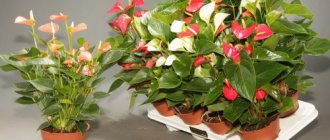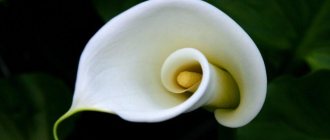Kalanchoe is one of the most common houseplants in apartments. Even a novice gardener can cope with reproduction. The plant belongs to the genus of succulents, in which there are more than 200 species. Kalanchoe can be propagated by offspring, cuttings, children and seeds. This can be done even from fallen leaves. Next, we will take a closer look at all the methods of reproduction of Kalanchoe.
The plant can grow up to 30-120 cm, depending on the variety. Kalanchoe has long rounded leaves, the length of which reaches 7 cm. The flowers of the plant are small, grow up to 1 cm in diameter. They can be red, white, pink, etc. The flowering period is in March-June.
Reproduction of Kalanchoe by brood buds (children)
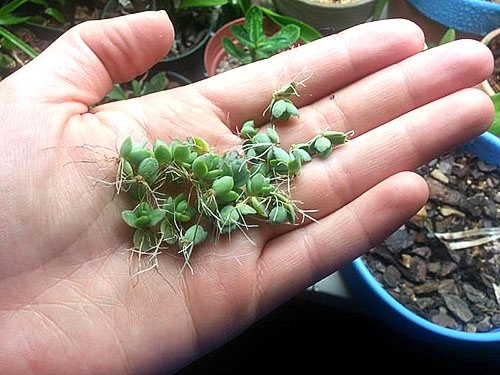
Answering the question of how the Kalanchoe reproduces by brood leaf buds (children), it should be noted that not all species of this succulent have them. Small daughter plants are formed on the leaves of the "viviparous" Kalanchoe. Other varieties of this flower do not form them. Kalanchoe babies have several leaves and roots. Adult succulents often shed their brood buds on their own, which take root at the base of the mother plant. They can be planted in separate pots with a fertile substrate. Fully formed offspring are gently broken off from an adult leaf and buried a little into the prepared substrate.
Reviews of Kalanchoe lovers: blooming, flexible flower
Everything turned out to be simpler for me, not so long ago my Kalanchoe began to disappear from me, I took the cut with a light hand, planted it to the adeniums. When adeshek had to dive, I put a weak sluggish stalk to one of the adesheks, and then I just had to replant ...
Kisunya)))
When I planted small shoots, I removed the leaves from below so that I could deepen a little. I stuck these leaves at random into the same pot. And what I see is that 4 out of 7 leaves have “ears”. What's this? So the leaves have begun and will grow as separate plants? If so, wouldn't it be cramped for all of them in one pot?
OlyaLea
On June 15, she cut off the top of the head and cut off the lower leaves on felt Kalanchoe. I put them in a box to dry the slices. Almost two weeks have passed, today I saw - they gave roots. Once again I am convinced that the longer to dry the cuttings / leaves before rooting, the better. Now you can plant safely.
Ugusha
My Kalanchoe grew into a huge bush and was not even going to bloom for 3 years, although I did everything possible for this. In winter, she cut it off radically and rooted several tops. The most interesting thing is that I did nothing with them and did not even expect them to bloom so quickly. Of the 4 cuttings, two have already begun to bloom (the cuttings are only four months old). They stand on the southern windowsill, but other plants shade them a little.
Oksanka
It doesn't matter which method you choose - breeding Kalanchoe is not difficult even for beginners. Given its craving for self-rooting, you just have to provide the flower with such an opportunity, providing the plant with light, soil and water.
The name "Kalanchoe" unites many succulents with similar characteristics. There are more than 200 species in the genus, and no fewer forms have been bred through selection.However, the appearance, size, method of propagation of plants can vary greatly.
There are at least 6 ways to breed Kalanchoe at home. Some of them are simple, but only suitable for certain species. In this article we will look at two universal methods applicable to all plant forms - propagation by cuttings and leaf blades.
Reproduction by leaf blades
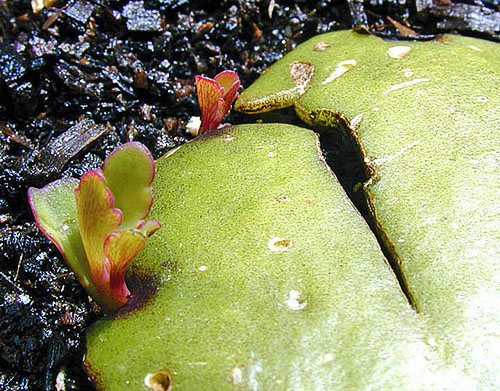

Reproduction of Kalanchoe leaves is carried out at any time of the year. To do this, cut off an adult leaf and plant it in a pot with a well-moistened fertile substrate. Cover the leaf with a glass or jar. After a few days, the leaf takes root and a full-fledged plant is soon formed from it. For reproduction, parts of the leaf blade buried in the soil are often used. Young plants also develop rapidly from them.
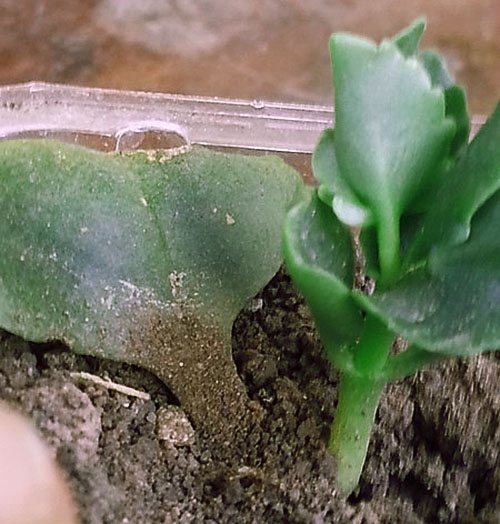

If you do not want to cut off the leaves from an adult plant, fallen leaves that have not had time to dry are also suitable for reproduction. In order for them to quickly take root, they are placed in a glass of water. After the first roots appear on the leaves, they are transplanted into pots with a fertile substrate.
Possible problems
Despite the fact that reproduction of Kalanchoe is not so difficult, in the process of this some problems may arise, which are often associated with florist errors. They can be performed both in the process of flower reproduction, and in further care.
Sometimes, after transplanting leaves and cuttings, they do not develop, but begin to die. Most often this is due to the decay of the cut, in the place of which the root system should have formed. The reason for this is the poor drying of the sections before planting. The situation can be corrected if the area of rot is relatively small - it is removed, and the new cut is dried and the cutting or leaf is planted again. Sometimes flower growers choose the wrong soil for the succulent, which will further hinder its active growth and development.
The mixture should not contain a lot of peat and be too dense.
If the flower is growing slowly or has stopped developing altogether, it is recommended transplant into a suitable substrate.
Failure to comply with the recommended conditions for keeping Kalanchoe can lead to disease and death of the plant. The flower must provide a good level of illumination, as well as observe the temperature regime. As for fertilizers, then the condition of the flower is affected by both their lack and excess. Also it is not advisable to fertilize Kalanchoe in winter.
For information on how to propagate a Kalanchoe with a leaf, see the next video.
Kalanchoe has long and firmly settled in our homes. Undemanding care, ease of reproduction, as well as the healing properties of the juice of some species and the beautiful flowering of others, have made this plant popular among indoor floriculture lovers.
Reproduction of Kalanchoe by cuttings
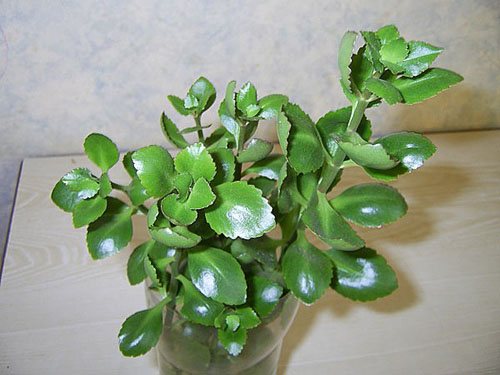

Kalanchoe, which can be propagated by cuttings during the formation of a bush or plant transplant, takes root in moist soil in just 2 weeks. For cuttings, strong shoots are chosen. They can be of any length, but it is best to shorten them to 6-8 cm. Most often, shoot tips are used for this, which are soft and juicy tissues. They are cut and planted in a moist fertile substrate or placed in a glass of water until roots appear. Young plants obtained from cuttings form a neat bush and are easy to form.
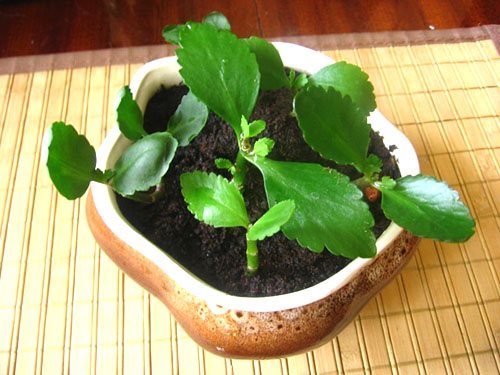

Cutting Kalanchoe helps to continue the life of your favorite type of plant planted in a flower bed and get a full-fledged indoor flower.
The Kalanchoe Blossfeld species, which is popular among flower growers, reproduces well by cuttings. Air roots are often formed on the shoots of this flowering succulent.Cuttings with air roots cut off from the mother plant root very quickly in moist soil. Such a Kalanchoe is developing rapidly. The very next year, a full-fledged flowering plant is obtained from it.
Care features
The general principles of caring for all types of Kalanchoe are the same. But you should take into account the nuances when caring for flowering plants.
- Such plants need good lighting, they need up to 12 hours of light per day, especially during the flowering period, while direct rays should be avoided.
- At the end of flowering, the plant needs "rest". It is removed to a cool, shaded (but not dark) place.
- Compliance with the watering regime. Water abundantly, but not often.
- The main secret of caring for flowering Kalanchoe species is radical pruning, immediately after the flowering period.
- Fertilized rarely.
To stimulate flowering, some growers recommend artificially shortening daylight hours. For a month before flowering, be on a lighted windowsill for 8 hours, and then hide it under a box.
Taking care of medicinal varieties is even easier, you don't need to worry about flowering and special lighting.
Reproduction of Kalanchoe offspring
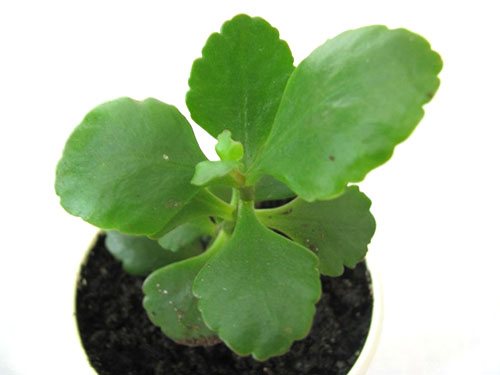

Kalanchoe is sometimes propagated by the offspring of an adult plant. To stimulate their development, pinch the tops of the stems after the succulent has faded. After that, young offspring grow next to the mother plant, which they use for reproduction. When they reach 1/3 of the height of an adult plant, they are carefully separated from it, taking care not to damage the roots. The offspring are planted in pots with a peat-sandy substrate. Such shoots quickly take root and grow.
Reproduction of Kalanchoe seeds
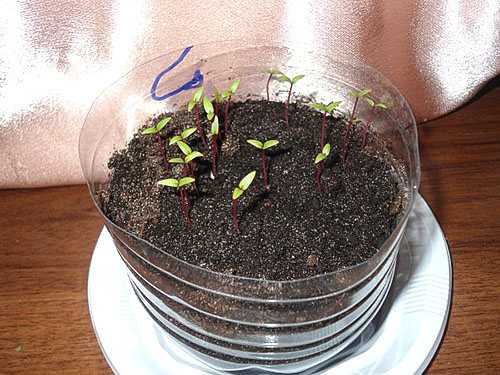

Kalanchoe, which is most often reproduced at home in early spring, can also be obtained from seeds. They are distinguished by good germination. Well-drained fertile soil is prepared before sowing. The temperature in the room intended for seed germination should not fall below 20 ° C. The seed is spread evenly over the wet soil surface. Then they are pressed down with a finger. The pot or box with seeds is covered with glass or foil.
Periodically, the glass or film is removed to ventilate the crops. Water them with a spray bottle with water at room temperature. Not the slightest drying out of the substrate should be allowed. The glass or film is removed after germination. Slightly grown seedlings dive, removing the weakest specimens. Young succulents are transplanted into pots filled with substrate.
Plant varieties
Throughout its history, the Kalanchoe has received many names - a room doctor, a tree of life, a healer at home ... This plant has always been on the windows of our grandmothers. Currently, there are many different types of this beautiful flower, among which there are flowering representatives. They are the most popular. In nature, there are a total of more than 200 varieties of Kalanchoe. Only a few of them are grown at home. All of them are easy to care for and reproduce.
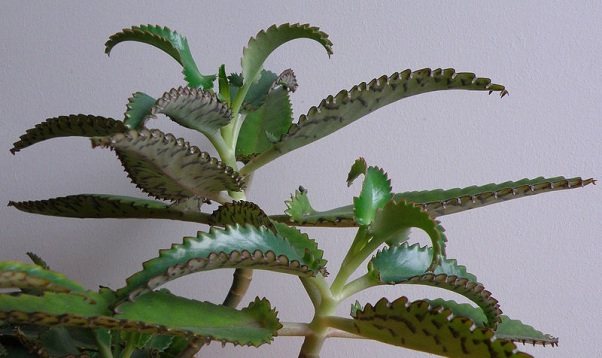

Kalanchoe can be safely attributed to unpretentious flowers. Plants belong to the jumbo family. Its homeland is the tropics, so the flowers are accustomed to staying for a long time in humid and arid conditions. At favorable times, the leaves of the plant accumulate moisture, which is gradually used for survival. The flower takes root well in any home and does not require frequent transplants and fertilizing, which greatly facilitates caring for it. The plant is very resistant to pests and diseases. Even if you did something wrong and your flower began to die, it can always be divided into cuttings, which are very easy to root. Reproduction of Kalanchoe is a simple process.Almost every rooted plant turns into a healthy and full-fledged flower.

